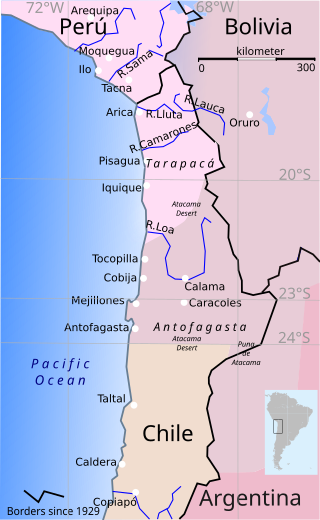
The War of the Pacific, also known as the Nitrate War and by multiple other names, was a war between Chile and a Bolivian–Peruvian alliance from 1879 to 1884. Fought over Chilean claims on coastal Bolivian territory in the Atacama Desert, the war ended with victory for Chile, which gained a significant amount of resource-rich territory from Peru and Bolivia.
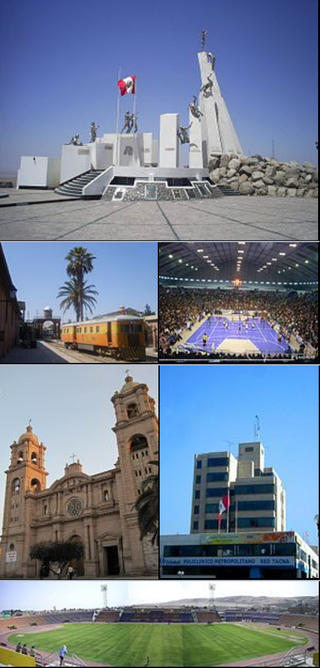
Tacna, officially known as San Pedro de Tacna, is a city in southern Peru and the regional capital of the Tacna Region. A very commercially active city, it is located only 35 km (22 mi) north of the border with Arica y Parinacota Region from Chile, inland from the Pacific Ocean and in the valley of the Caplina River. It is Peru's tenth most populous city.

Tacna is the southernmost department and region in Peru. The Chilean Army occupied the present-day Tacna Department during the War of the Pacific from 1885 until 1929 when it was reincorporated into Peru.
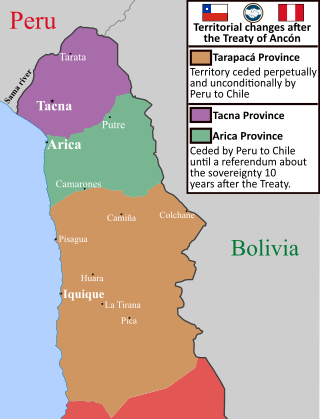
The Treaty of Ancón was a peace treaty signed by Chile and Peru on 20 October 1883, in Ancón, near Lima. It was intended to settle the two nations' remaining territorial differences at the conclusion of their involvement in the War of the Pacific and to stabilise post-bellum relations between them.

The Tacna–Arica compromise or Treaty of Lima was a series of documents that settled the territorial dispute of both Tacna and Arica provinces of Peru and Chile respectively. According to the Treaty, the Tacna-Arica Territory was divided between both countries; Tacna being awarded to Peru and with Chile retaining sovereignty over Arica. Chile also agreed to pay up to US$6 million in compensation to Peru. The Treaty was signed on 3 June 1929 in Lima by then-Peruvian Representative Pedro José Rada y Gamio and Chilean Representative Emiliano Figueroa Larrain.
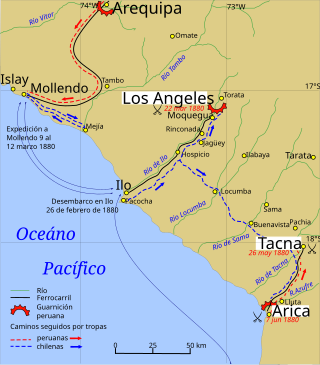
The Tacna and Arica campaign is known as the stage of the War of the Pacific after the Chilean conquest of the Peruvian department of Tarapacá, ending with Chilean domination of the Moquegua department in southern Peru. During this campaign Bolivia retired from the war after the Battle of Tacna, and Peru lost the port of Arica. Also, Manuel Baquedano assumed command as the new Commander in Chief of the Chilean Army, and the Allied Presidents were thrown out of office and replaced by Nicolas de Pierola in Peru and General Narciso Campero in Bolivia.

The Province of Tarapacá was a territorial division of Peru that existed from 1837 until 1883. The capital of this province was the city of Iquique. With the creation of the Tarapacá Department in 1878 the capital was moved to the city of Tarapacá. The province was bordered on the north by Arica Province, on the east and south by Bolivia, and on the west by the Pacific Ocean. Peruvian people constituted a minority in the province as both Chileans and Bolivians were more numerous.

Tarapacá was a Department of Peru, which existed between 1878 and 1884, when it was unconditionally ceded to Chile after the War of the Pacific under the Treaty of Ancón.

After the naval campaign of the War of the Pacific was resolved, the Chilean terrestrial invasion began.

The Chilean occupation of Peru began on November 2, 1879, with the beginning of the Tarapacá campaign during the War of the Pacific. The Chilean Army successfully defeated the Peruvian Army and occupied the southern Peruvian territories of Tarapacá, Arica and Tacna. By January 1881, the Chilean army had reached Lima, and on January 17 of the same year, the occupation of Lima began.

Tarapacá Department was a department in Tarapacá Province, Chile, from 1883 to 1928. It was ceded to Chile under the Treaty of Ancón, formerly being part of the Peruvian province of the same name.
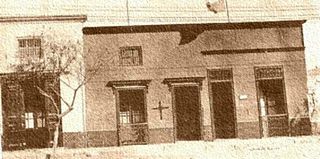
The Chilenization of Tacna, Arica, and Tarapacá was a process of forced transculturation or acculturation in the areas which were invaded and incorporated by Chile since the War of the Pacific (1879–1883). The aim of the Chilenization was to create a dominance of Chilean traditions and culture in that region, in preference to those of the Peruvian population. The British desire to reunite all saltpeter mines under one political administration was also a major factor that influenced the outcome of the war.
Gerardo Vargas Hurtado (1869–1941) was a Peruvian journalist born in Arica. He was also a playwright, historian, founder of the newspaper El Ariqueño and a journalist of the newspaper El Morro de Arica published until 1911.

The Tacna Province was a territorial division of Chile that existed between 1884 and 1929. It was ceded by the Treaty of Ancón in 1883 and placed under military administration, and then created on 31 October 1884, incorporating the former Peruvian provinces of Tacna and Arica of the also former Tacna Department, as well as a contested claim over Tarata, and was returned to Peru at midnight on 28 August 1929, under the terms agreed upon in the Treaty of Lima of the same year.

The Tacna Department was a territorial division of Chile that existed between 1884 and 1929. It was ceded by the Treaty of Ancón in 1883 and placed under military administration, and then created on the 31st of October 1884, as one of the three departments of the Tacna Province, incorporating as well a disputed claim over Tarata, and was returned to Peru at midnight on the 28th of August 1929, under the terms agreed upon in the Treaty of Lima of the same year.

The Arica Department was a territorial division of Chile that existed between 1884 and 1929. It was ceded by the Treaty of Ancón in 1883 and placed under military administration, and then created on the 31st of October 1884, as one of the three departments of the Tacna Province, and was returned to Peru at midnight on the 28th of August 1929, under the terms agreed upon in the Treaty of Lima of the same year.

Tarapacá was a province in Chile, from 1883 to 1928. It was ceded to Chile under the Treaty of Ancón, formerly being part of the Peruvian province of the same name.

Pisagua Department was a department in Tarapacá Province, Chile, from 1883 to 1974. It was ceded to Chile under the Treaty of Ancón, formerly being part of the Peruvian province of the same name.
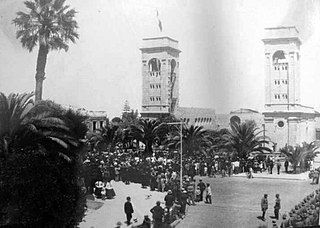
The handover of Tacna from Chile to Peru took place on August 28, 1929. The event ended 49 years of Chilean rule over its then newest province, which began in 1880 after the Bolivian–Peruvian defeat at the Battle of Tacna against the Chilean Army during the War of the Pacific.

The Chilean–Peruvian territorial dispute is a territorial dispute between Chile and Peru that started in the aftermath of the War of the Pacific and ended significantly in 1929 with the signing of the Treaty of Lima and in 2014 with a ruling by the International Court of Justice. The dispute applies since 2014 to a 37,610 km2 territory in the Chile–Peru border, as a result of the maritime dispute between both states.












